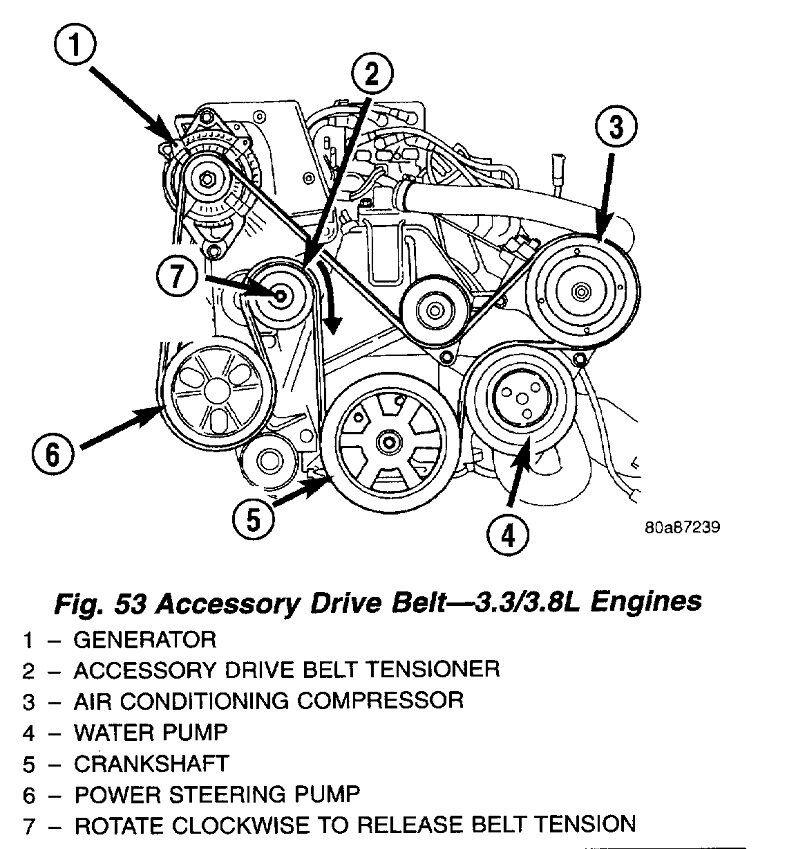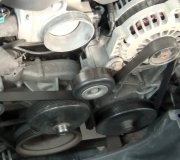I had another thought that may be of value. Consider visiting a Chrysler dealership and talk with their steering, suspension, and alignment specialist. Best would probably be just at the start of lunch hour. They have two resources that may be able to provide better answers.
The first one is called "Star Hotline". It is only for dealership mechanics who are expected to be very knowledgeable about the problem. Unfortunately, my experience a couple of times was I was smarter than the person on the other end who was just reading from a script. The people on that hotline are supposed to be able to help find solutions for uncommon or elusive problems, especially those that defy logic. They don't get involved with what is or is not covered by any warranty, but if one person was able to put the belt on wrong, you can be sure someone else has done it already. There may be a similar case logged with a solution provided.
The second resource is the Chrysler training centers. In between teaching classes, these are the people who bring in vehicles that no one has been able to diagnose, and this is where technical service bulletins are generated. Those are very different than recalls. A TSB is issued to provide the solutions to problems that have shown up on a number of one car model, and the diagnosis can be very tedious, time consuming, or elusive. They're meant to save time for the mechanic and his customer. If anyone would know off the top of their head what could happen with a misrouted belt, it would be them.
For future reference, if this had been done at a dealership, and especially if there's a dispute over warranty coverage, they have a District Representative who visits them once a month for just such problems. This is one of the few times the dealership owner's office door will be closed. He will be your advocate with the District Rep on the other side of the desk. That Rep has the authority to warranty "anything", and they're very good at keeping customers happy.
Many of those questionable warranty issues simply can not be handled by the dealer alone due to franchise regulations, but to bridge the gap when waiting for the appointment with the District Rep, Chrysler used to allow a dollar amount to each dealership every year for cases where something failed or went wrong that is technically out of warranty, but it really shouldn't have happened. Back in the days when the standard warranty was 12 months / 12,000 miles, they could use those funds up to 18 months / 18,000 miles with no authorization needed from Chrysler. Because those funds were limited, they only got used for very good repeat customers, and those who were calm and respectful. Anyone who came in screaming or with "unreasonable expectations" was unlikely to be on the receiving end of that courtesy.
You can get the same consideration from independent shop owners too, but they obviously have much more limited resources.
I should mention too that starting with the '93 Intrepid, "variable power steering assist" was introduced. That was an unnecessarily complicated system designed to save a teaspoon of gas. I never had to diagnose one of those or repair it, but I do recall its computer module was accessed with a scanner under the "Automatic Transmission" menu. That's a very small black plastic box that mounts on or near the rack and pinion steering gear. It gets data from the Transmission Computer, including road speed and the gear the transmission is in, then uses that to know when to decrease power steering assist. The Transmission Computer is capable of detecting defects and storing diagnostic fault codes just like Engine Computers do. Transmission fault codes will set a code P0700 in the Engine Computer which just says there are codes that need to be read in the Transmission Computer, but since transmission trouble could adversely affect emissions, it also turns on the Check Engine light. If a fault code is set in the Transmission Computer related to the variable power steering assist, that would not affect emissions, so it would not turn on the Check Engine light. It might pay to mention this to the people working on this problem. Most people don't realize this system is there and they would never think of having to look under "Transmission" to see the data and fault codes.
Please keep me updated on your progress.
Monday, March 6th, 2023 AT 5:54 PM




